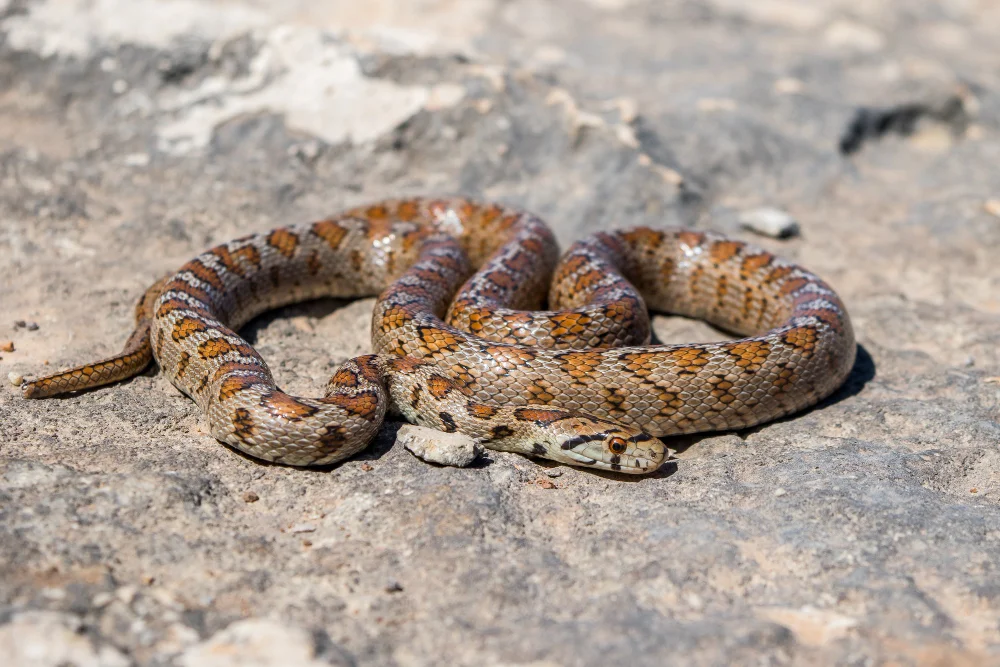Vipers are a group of venomous snakes belonging to the family Viperidae, known for their potent venom and characteristic triangular heads. These snakes are found across various habitats worldwide, ranging from forests and grasslands to deserts and mountains. With their specialized venom delivery systems and camouflaged appearances, vipers are efficient predators capable of delivering swift and lethal strikes to their prey.
Physical Characteristics:
Vipers vary in size and appearance depending on the species, but they typically have stout bodies, triangular heads, and vertically elliptical pupils. Many vipers exhibit cryptic coloration, allowing them to blend seamlessly into their surroundings and ambush unsuspecting prey. Some species have heat-sensing pits located between their eyes and nostrils, enabling them to detect the infrared radiation emitted by warm-blooded prey.
Habitat and Distribution:
Vipers inhabit a wide range of ecosystems, including forests, grasslands, deserts, and rocky areas. They are found on every continent except Antarctica, with the highest diversity occurring in tropical regions. Vipers are particularly common in Africa, Asia, and the Americas, where they occupy diverse habitats ranging from rainforests to arid scrublands.
Behavior and Diet:
Vipers are primarily ambush predators, relying on stealth and camouflage to capture prey. They typically feed on a variety of small mammals, birds, amphibians, and reptiles, using their venom to immobilize and digest their prey. Vipers possess long, hollow fangs connected to venom glands, allowing them to inject potent toxins into their victims. After striking, vipers often retreat and wait for their prey to succumb to the venom before consuming it.
Reproduction and Life Cycle:
Vipers reproduce sexually, with females giving birth to live young or laying eggs, depending on the species. Mating behavior varies among vipers, with some species engaging in elaborate courtship rituals. Female vipers typically give birth to a litter of offspring, which are born fully developed and capable of fending for themselves shortly after birth. Juvenile vipers resemble adults but are often more brightly colored and patterned.
Venom and Venomous Bites:
Vipers possess potent venom composed of various toxins designed to immobilize and subdue prey. While vipers are not typically aggressive towards humans, they will defend themselves if threatened or cornered. Viper bites can cause severe pain, swelling, tissue damage, and, in some cases, systemic effects such as organ failure or death. Immediate medical attention is essential following a viper bite to minimize the effects of envenomation.
Conservation Status:
Many species of vipers face threats from habitat loss, fragmentation, pollution, and human persecution. Additionally, vipers are often targeted for their skins and body parts, which are used in traditional medicine or the exotic pet trade. Several species of vipers are listed as threatened or endangered due to these threats, highlighting the need for conservation efforts to protect their populations and habitats.
Conclusion:
Vipers are a diverse group of venomous snakes known for their potent venom, cryptic appearances, and efficient hunting techniques. Found across a wide range of habitats worldwide, vipers play crucial roles in ecosystem dynamics as both predators and prey. While they inspire fear and fascination in humans, vipers are essential components of their ecosystems and warrant respect and conservation efforts to ensure their continued survival in the wild.

